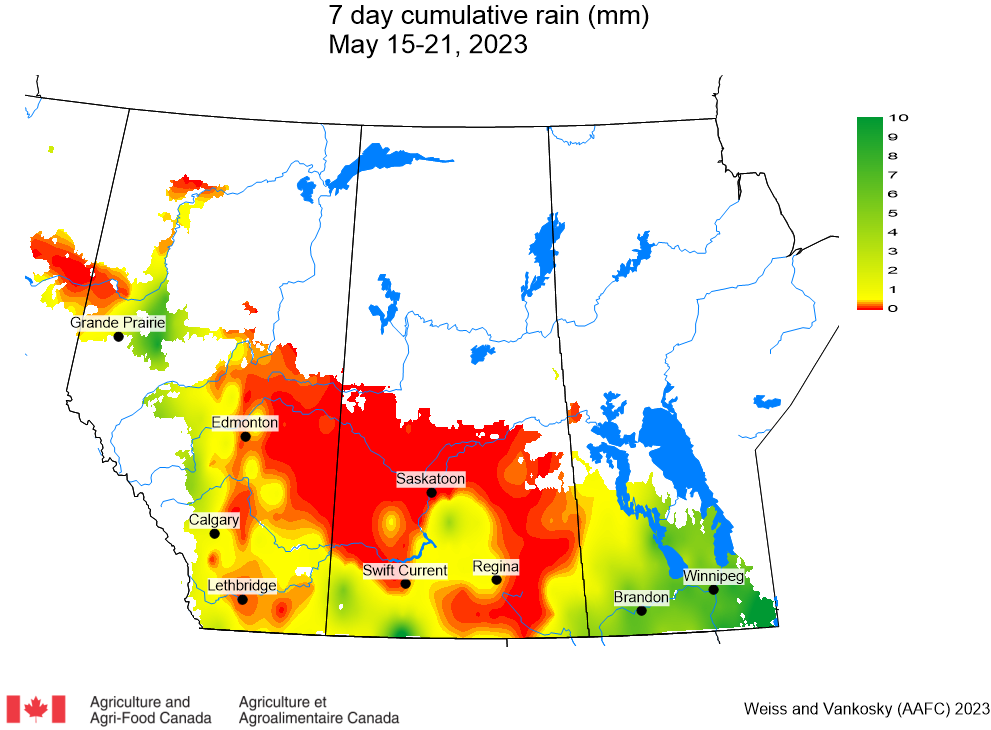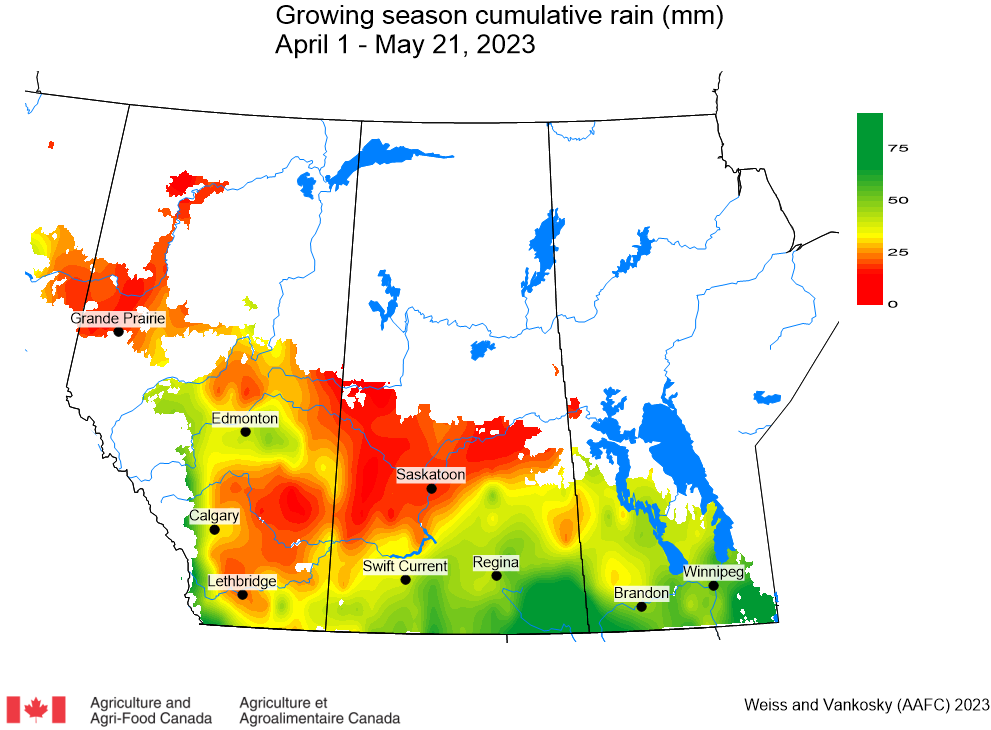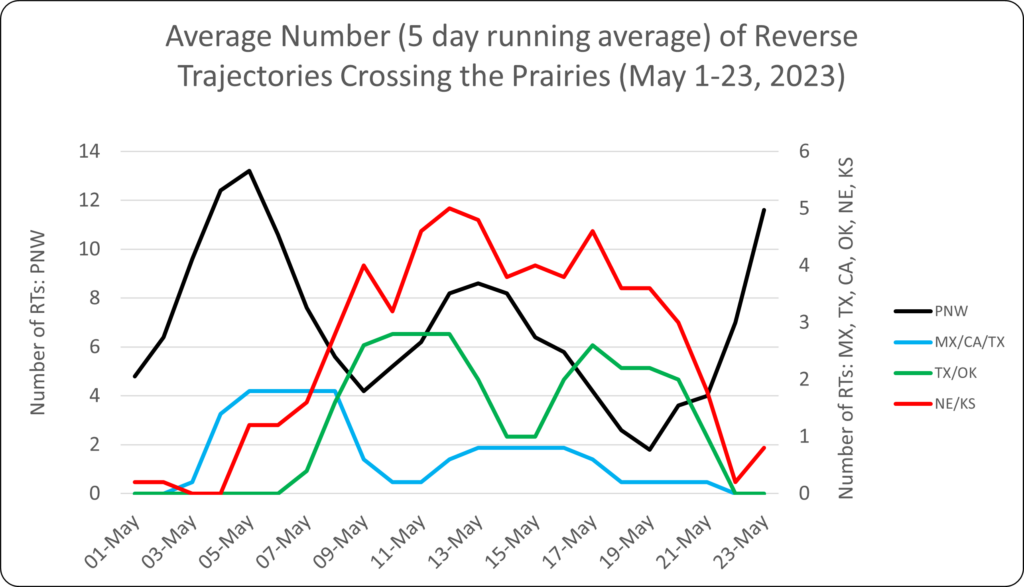It’s already Week 3!
The week of May 22-26 saw the arrival of some much needed precipitation to parts of Alberta and Saskatchewan, but hot weather up to May 21 across most of the prairies has affected insect development so far this spring.
Grasshoppers thrive in warm, dry conditions and we continue to hear about high numbers of nymphs along roadsides and field edges. Diamondback moths have been captured in pheromone traps across the prairies, generally in low numbers. In preparation for bertha armyworm monitoring, we ran the model for pupal development this week and unsurprisingly, development is ahead of schedule. For more information, check out the posts in the Weekly Update! The Insect of the Week is about parasitoids of cutworms this week – read on and check out the links for more information. Finally, Dr. Kevin Floate has written a new book about dung beetles that is available for free download!
The prairie-wide maps summarizing the results from the 2022 growing season are online and available for review, as are the historical insect pest distribution maps. These prairie-wide geospatial maps offer insight into potential risk and help growers prioritize their scouting lists.
Remember, insect Monitoring Protocols containing helpful insect pest biology, how and when to plan for in-field scouting, and even thresholds to help support in-field management decisions are all available for review or download.
To receive free Weekly Updates automatically, please subscribe to the website!
Questions or problems accessing the contents of this Weekly Update? Please contact Dr. Meghan Vankosky (meghan.vankosky@agr.gc.ca) to get connected to our information. Past Weekly Updates, full of information and helpful links, can be accessed on our Weekly Update page.





















